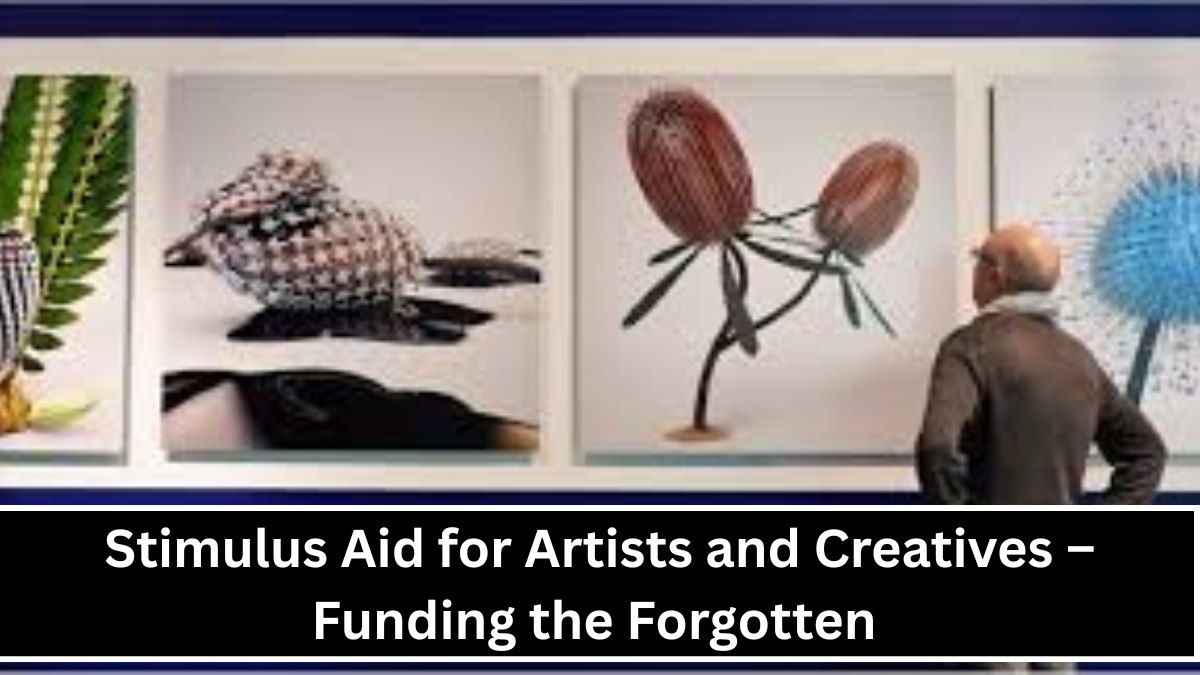When the world faced the COVID-19 pandemic, governments rushed to support businesses and workers through stimulus checks and relief programs. But there was one group that was often left behind: artists and creative professionals. Painters, musicians, actors, writers, designers, photographers, and freelancers faced major challenges during lockdowns. Many lost work, couldn’t perform or exhibit, and had little access to traditional unemployment benefits. These individuals make our world beautiful and inspiring, but during the crisis, their incomes vanished—and so did much of the help they needed. That’s where stimulus aid for artists and creatives came in, aiming to fund the forgotten and support those who give voice to culture and creativity.
Program Name: Artist Relief Funds and Creative Recovery Grants
Across the world—and especially in the United States—many public and private organizations created special funds to support artists and creatives. These weren’t just government checks. These were programs built specifically to help people in the arts who didn’t fit into normal job categories. One major initiative was the “Artist Relief” fund, a national coalition formed during the pandemic. It offered emergency financial support to artists across disciplines. Eligible applicants could receive grants of $5,000 or more to cover essentials like rent, food, and healthcare.
Other programs like the National Endowment for the Arts (NEA) expanded support through stimulus bills like the CARES Act and American Rescue Plan. Local governments and cities also launched creative recovery grants, helping theatres, galleries, and freelancers who had lost all income due to event cancellations. These grants didn’t just keep people afloat—they preserved art, culture, and creativity during a time when the world needed hope.
Why Artists Needed Special Support
Unlike salaried employees, artists and creatives often work freelance, gig-to-gig, or run small personal businesses. Many didn’t qualify for regular unemployment benefits. Others had trouble proving lost income or accessing digital application systems. Without live shows, gallery exhibits, weddings, concerts, or public events, their income streams dried up.
For many, art is not just a passion—it’s their profession, their full-time job. Yet, society often doesn’t treat creative work as “real work.” That’s why many governments and organizations began to realize the need for special attention to the creative sector. Supporting artists isn’t just charity—it’s an investment in culture, mental health, education, and tourism. Stimulus aid helped artists keep going when they had no stage, no audience, and no income.
How These Programs Made a Difference
Grants provided artists with breathing space. Some used the funds to pay overdue bills, others bought supplies to continue working from home. Many were able to shift their creativity online—teaching virtual classes, livestreaming performances, or creating new digital art.
In some communities, muralists were hired to paint public health messages. Writers created poetry around pandemic resilience. Musicians wrote songs of hope. The aid didn’t just help individuals—it kept communities connected through art. By funding the forgotten, these programs recognized the value of creative work in times of crisis.
The pandemic taught us many lessons—one of the most important is that everyone deserves support, including those in creative fields. Artists, performers, and freelancers are often the heart and soul of our communities. They help us feel, reflect, and stay united through tough times. Stimulus aid for artists was not just about money—it was about recognizing value, offering dignity, and keeping culture alive. As we move forward, we must continue to support these voices that help define who we are. Because funding the forgotten is not just an act of kindness—it’s an investment in our shared human story.
FAQ’s:
Q1. What is the Artist Relief fund?
A1. Artist Relief was a national U.S. initiative that offered emergency grants to artists affected by the COVID-19 pandemic. Grants typically ranged from $5,000 and up.
Q2. Who qualified for creative stimulus aid?
A2. Writers, performers, visual artists, musicians, photographers, and other creatives working independently or in small groups were usually eligible, depending on the program.
Q3. Were these funds from the government or private groups?
A3. Both. Some aid came from federal programs like the CARES Act, while other funds were created by nonprofits, art foundations, and city-level governments.
Q4. Can artists still apply for relief today?
A4. Some local and national grants still exist, especially in areas focused on pandemic recovery or long-term creative support. Check local arts councils or creative networks for updates.
